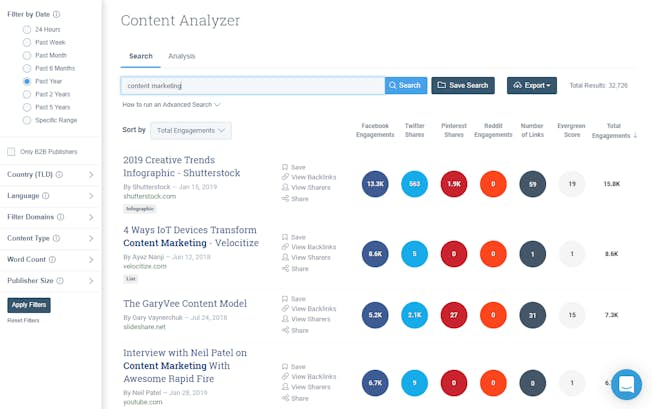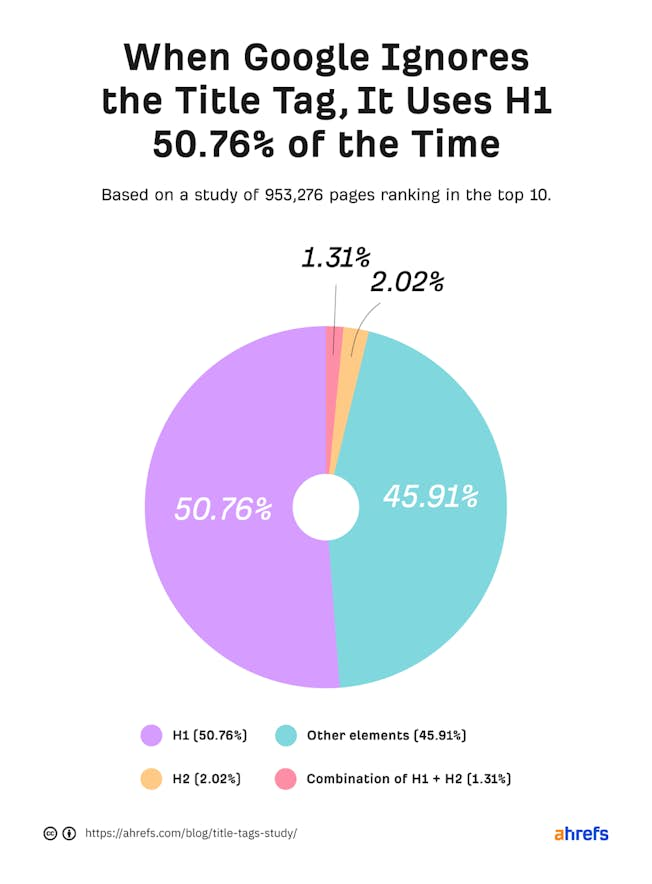
Search Engine Optimization or (SEO) is growing in importance for any business operating online. The reason? SEO is one of the main ways people find your brand online - using SEO writing amongst other tactics - so where you rank is crucial.
After all, the number one spot on Google gets a 27 percent click-through ratecompared to only a 0.63 percent CTR for Google’s second page according to Backlinko.
An SEO competitive analysis (as an add-on to a full digital marketing competitive analysis) will allow you to see what your competitors are doing with SEO and how you compare to them.
It will highlight the strengths and weaknesses so you can create a strategy that helps you stay ahead of them in the rankings (Google and otherwise). There are five key steps you carry out in a competitive analysis:
So let's dive in and see how to do competitive analysis in SEO.
Whether you’re a start-up or an established company you should know who your competitors are. This not only applies to the products or services you sell but also to where you rank on search engines - your SEO competitors!
The first thing to do in identifying your competitors is to make a list. Look at your keywords and website searches that you want to rank first for and see what websites or companies come up.
For example, on searching for ‘SEO trends 2023’ in the example below you can see that Wordstream has landed the featured snippet while positions two and three are taken by Search Engine Journal. So, if you are trying to rank for this term, these are your key competitors.

There are also some great SEO competitive analysis tools out there that can help you. SEMRush has a competitive analysis tab that will give you insight into other websites that are ranking for the same keywords. KW Finder is another tool with a competitor option to consider.
This will also help you find sites that you may not have heard of or considered so it’s a good way to unearth competitors.
Look at your competitors' websites to get a sense of their SEO strategy. This includes the website structure, types of content created, and the targeted keywords (both short and long-tail).
You should also check your competitors' website speed and mobile responsiveness. This can be done using tools like Google's PageSpeed Insights and Google's Mobile-Friendly Test.
Knowing these things will help you understand how your website compares to your competitors in terms of technical SEO.
It’s important to not only know the types of content your competitors produce but what content gets the most traffic. To help your SEO strategy, find out:
You can use a tool like BuzzSumo to find the most popular content in a given niche. This will help you understand what types of content are resonating with your target audience and which topics you should focus on.

You may be surprised by the content that drives traffic for your competitors. It could be a blog, a landing page, or even an ebook.
Social media holds a lot of sway when it comes to driving brand awareness and directing traffic.
So check out your competitors’ social media channels. Look at the number of followers they have, the type of content they share, and their engagement levels. This will help you understand how your competitors leverage social media to drive traffic to their websites.
This will help you understand which keywords your competitors are ranking for, and how well they are performing.
You should have a target list of primary and secondary keywords you want to rank for. Remember these keywords can change and rankings can decline so a regular check on your keywords is recommended.
The goal is to rank for your main keywords but also look at low-hanging fruit i.e. keywords that are relevant but have low competition so you can rise up the rankings.
You may be doing well when it comes to your primary keywords, but what about the ones you rank for but place you at the bottom of page one of the SERP?
Pay attention to those keywords as putting some effort into including them in your content could help you overtake your competitor to land a position ahead of them.
You should also look for keyword gaps and keyword opportunities. This will help you to identify terms or phrases you could and should be ranking for using tools like SEMRush or AHREFS.

You should also look at any keywords your competitors may have lost and have a good search volume. See where they are declining in the rankings, visit the page and see if you can figure out why. Then capitalize on that opportunity by creating content that includes those keywords.
The reason your competitors outrank you for SEO could be that they spend time and effort on optimizing their pages.
So you need to analyze the pages that are outranking you. This will help you to identify why your competitors are doing better when it comes to where they are positioned on search engines.
Elements you should consider in your analysis are:
Titles - The title of your page is important to Google, it shows how relevant a keyword is to a search and is a ranking factor. Make sure your title tags are correct and tied to the right keyword as they tell browsers how to display your page’s title in search results, social media and browser tabs.
Meta-data - This is important for the meta keywords and meta description tags. Both will help Google to identify what your page is about. See what your competitors are doing to optimize searches.
Headlines or Headings - Google likes headings and gives weight to <h> tags when they are related to specific keywords. These can also be pulled out for featured snippets so can send your content to the top of the page. Be aware that when Google ignores the title tag, it uses H1 tags nearly 51 percent of the time instead according to Ahrefs.

Internal linking structure - Internal links help to direct visitors to relevant content and can also give your pages a lot of SEO juice. Don’t overload a piece with lots of links but include quality and relevant ones that keep people on your site.
Quality content - You can write as much content as you want but unless it’s quality and relevant, people won’t hang around to read it, and search engines won’t rank it. Quality is better than quantity when it comes to content creation. The competitors that rank highly may be using blogs that help them become an authority on the topic, so do a quick search to find out what they are. Here’s a ‘Guide to Content Ideation’ if you’re looking for some inspiration.
Images and videos - Are your competitors optimizing images and videos for the web and mobile? Are they properly tagged with descriptive and relevant names? You should do the same to compete.
Schema markup and structured data - Structured data helps search engines understand the content of a page and can improve visibility in search results.
URLs - Look at your competitors’ URLs and see if they are doing anything different. Make sure your URLs are descriptive, concise, and include relevant keywords.
Customer experience - Usability is a ranking factor so look at the layout of your competitors’ pages, the navigation, and load time. What’s the overall experience for a customer and how does it compare to yours?
Backlinks are important to search engines and ranking. You can learn a lot from your competitors’ backlink profiles by using Ahrefs, SEMrush, or Moz to get insights.
But it’s not about quantity for backlinks. Quality backlinks are what you are looking for and they are a great addition to any piece of content. In fact, low-quality backlinks can hurt your pages and be seen as spam so don’t use outreach to just get links from anywhere.
For example, if one of your pages is being linked from a high-authority site such as Wired, then it adds authority to your pages and is great for ranking.
Do an analysis to see what backlinks your competitors have that may be helping them rise up the rankings and see if you can replicate it. Are they getting good links from the media or being recommended by a well-considered organization or body?
Sites that link to your competitors may also link to you so take note of who they are. You can always reach out to them about a new blog or guide that covers a new topic or in a better way to get backlinks.
SEO is always changing (we know this by looking at trends) so it’s important to conduct a regular competitive analysis to stay ahead. DMI’s SEO course will teach you the fundamentals of SEO, how to improve your website, optimize content, on-page, off-page, and local SEO along with strategy. Sign up today!

A Content Writer is a professional who writes informative and engaging articles to help brands showcase their products.